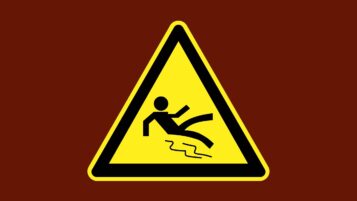Archive for 2007
Three Masters of Copy who are not “Copywriters”
Introduction Copywriting is the art and science of persuading people to take certain actions. The “copy” in copywriting simply means prose, and a good copy is any piece of text that communicates well. The copywriter’s job is to understand their audience and design a message that resonates with them. They use the right words, images,…
Read MoreWrite with Parallel Construction
Introduction Violation of parallel construction is the bane of commercial copy. Sentences, and sometimes whole paragraphs of copy, lose their direction and fail to communicate their core message if they are composed with unparallel components. Parallelism can be used to emphasize the contrast between different ideas, for example: I went to work and saw my…
Read MoreWrite Powerful Copy by Eliminating Old and Tired Expressions
You’ll increase your web site traffic faster if you use clean and short sentences. Remember: less is more. Eliminate all hackneyed expressions from your prose for some snappy copy. Examples: ——————————————————– Ring the bell in order to get service. BETTER: Ring the bell to get service. ——————————————————– Truth of the matter is, there is something…
Read MoreUse “Fewer” or “Less” Correctly
Introduction “Fewer” or “Less” is one of the most common questions that writers face. There are grammatical rules about which word to use in certain cases, but it’s easy to be confused when you have two words with similar meanings. It’s hard to know what is correct for each usage. People often use fewer where…
Read MoreTechnical Editing: 4 More Examples
Introduction Technical editing is half art and half science. In order to edit technical documents, it is important to know the type of language that is required for a given document. The target audience of a technical document may be engineers, executives or managers. The level of knowledge and expertise needed for editing a technical…
Read MoreBad English (or “Scamglish”) Gives Away E-Mail Scams
I’ve yet received another “Lottery Winning Notification” – this time from Microsoft (!). Ho ho ho! There are two items that give away these scams immediately: 1) The domain name of the return link is invariably registered in some foreign country (Hong Kong, Slovenia, Russia, UK, Netherlands, Japan, etc.) but never in the United States.…
Read MoreHow long online marketing copy can be?
The question comes up from time to time: “How long an online sales letter should be?” People new to direct marketing are a bit reluctant to send long letters for fear of “boring” their prospective customers. And that sounds like a valid point indeed in this day and age of soundbites, short YouTube clips and…
Read More3 Technical Editing Examples
Introduction Technical editing is an important job in the writing industry. But not everyone has the skills to edit these documents. Technical editors are professionals who make sure that the document is grammatically correct, easily readable and informative. Technical editing demands a different set of skills than general editing does. Technical editors must be able…
Read MoreHow to Apply Parallel Construction in Your Writing
Parallel construction is a stylistic grammar rule that I like and try to follow. It is defined as: Definition of Parallel Construction “In a compound sentence with multiple clauses, the clauses should be parallel in structure.” It’s called the “Parallel Construction” rule and I try to adhere to it in my own writing because it…
Read MoreHow to Fix “Misplaced Modifiers” in Your Writing
Introduction Even the most polished publications are not immune to that dreaded mistake committed frequently in English — the “misplaced modifiers.” Misplaced Modifiers are words that do not logically modify the word or phrase that they should be describing. They are modifying words that should be placed in a different sentence. Misplaced modifiers can come…
Read More


